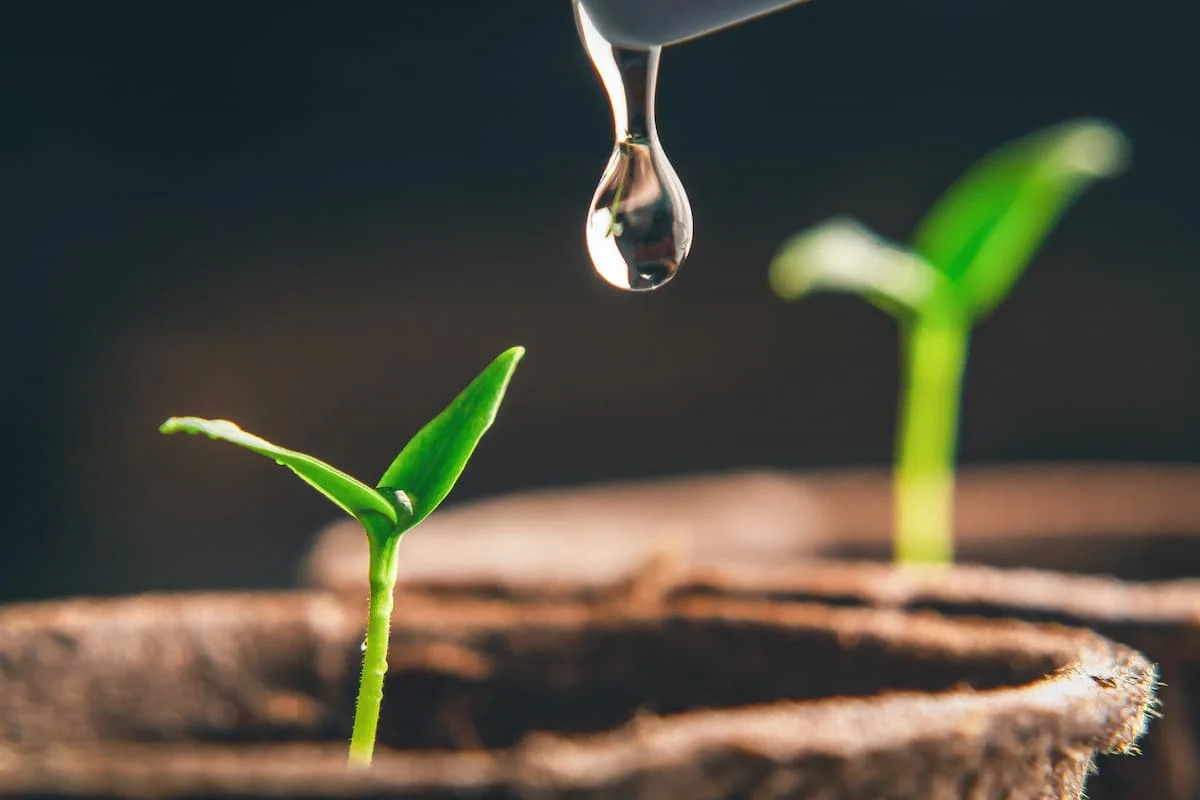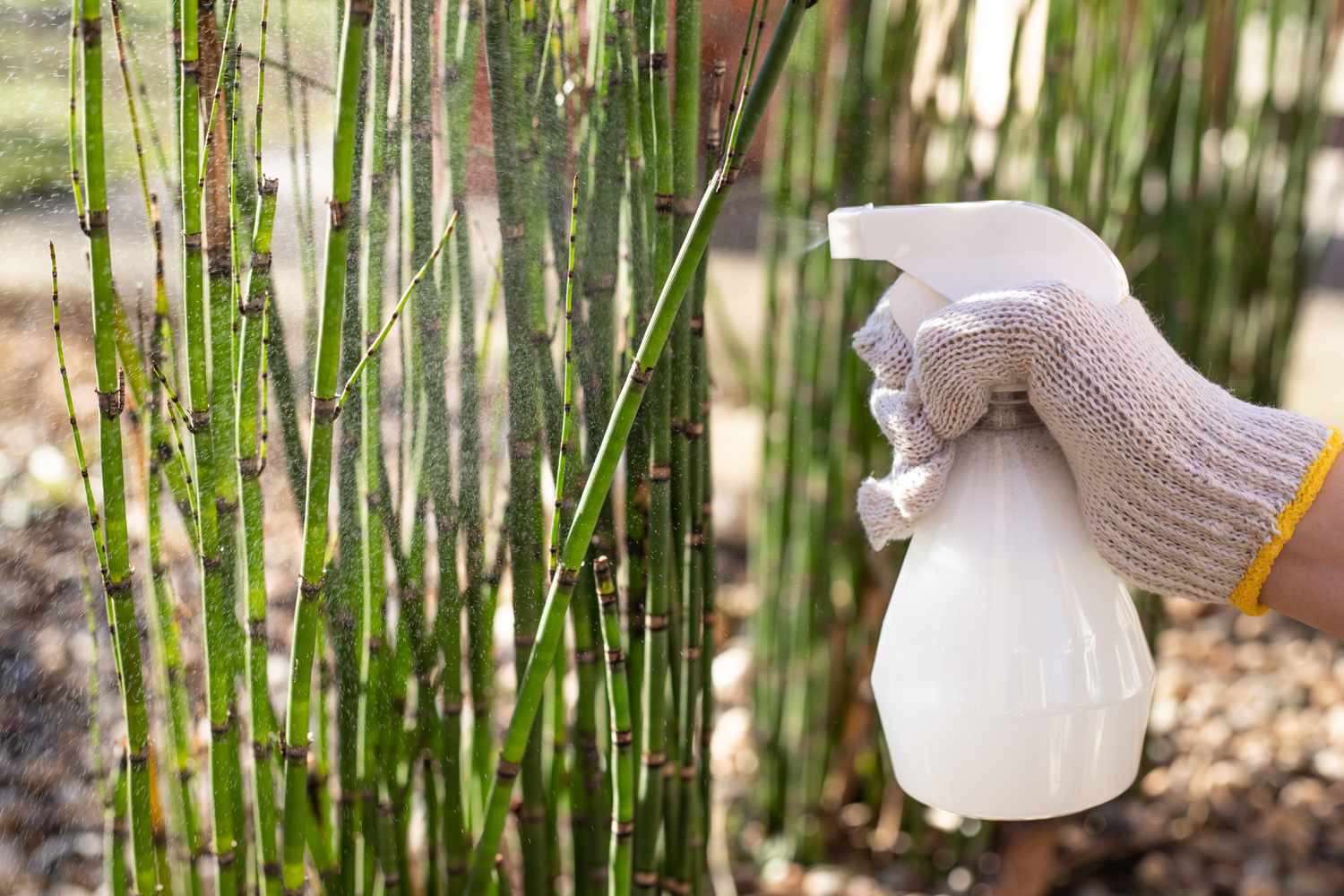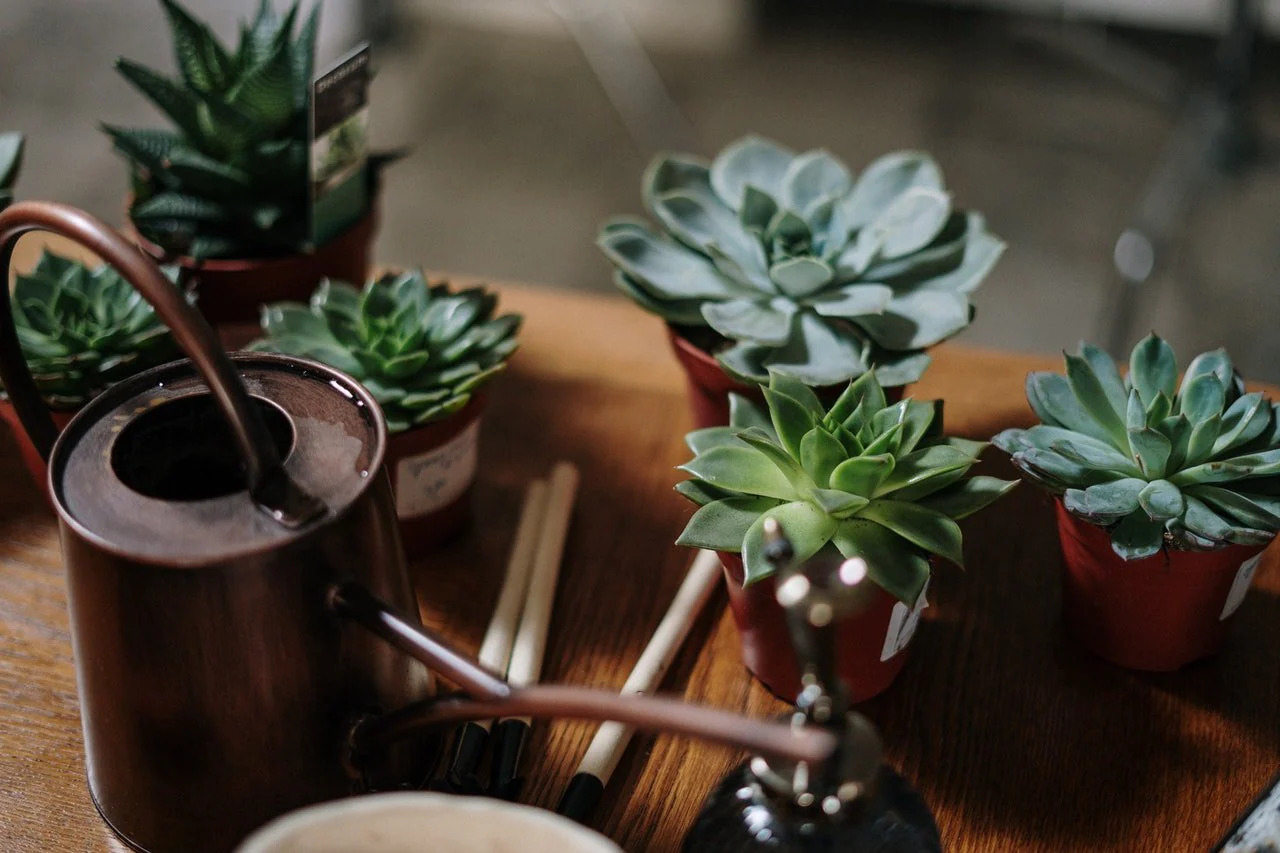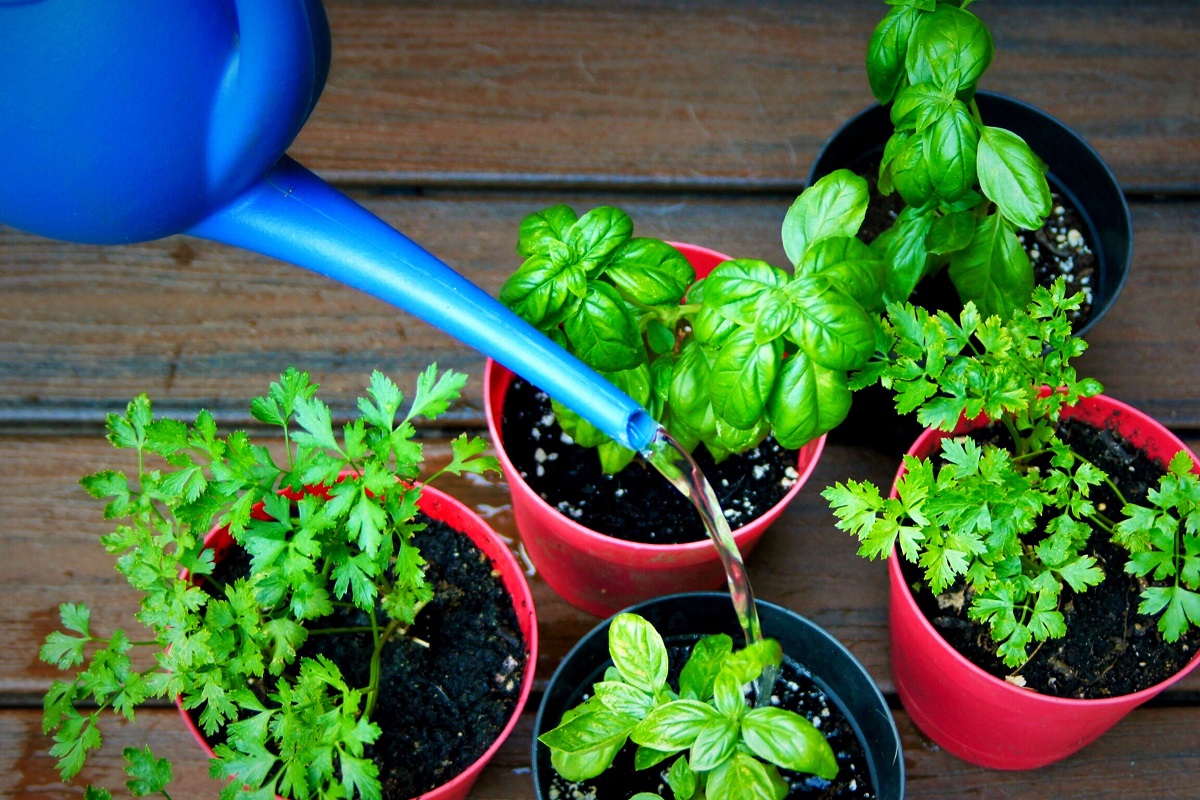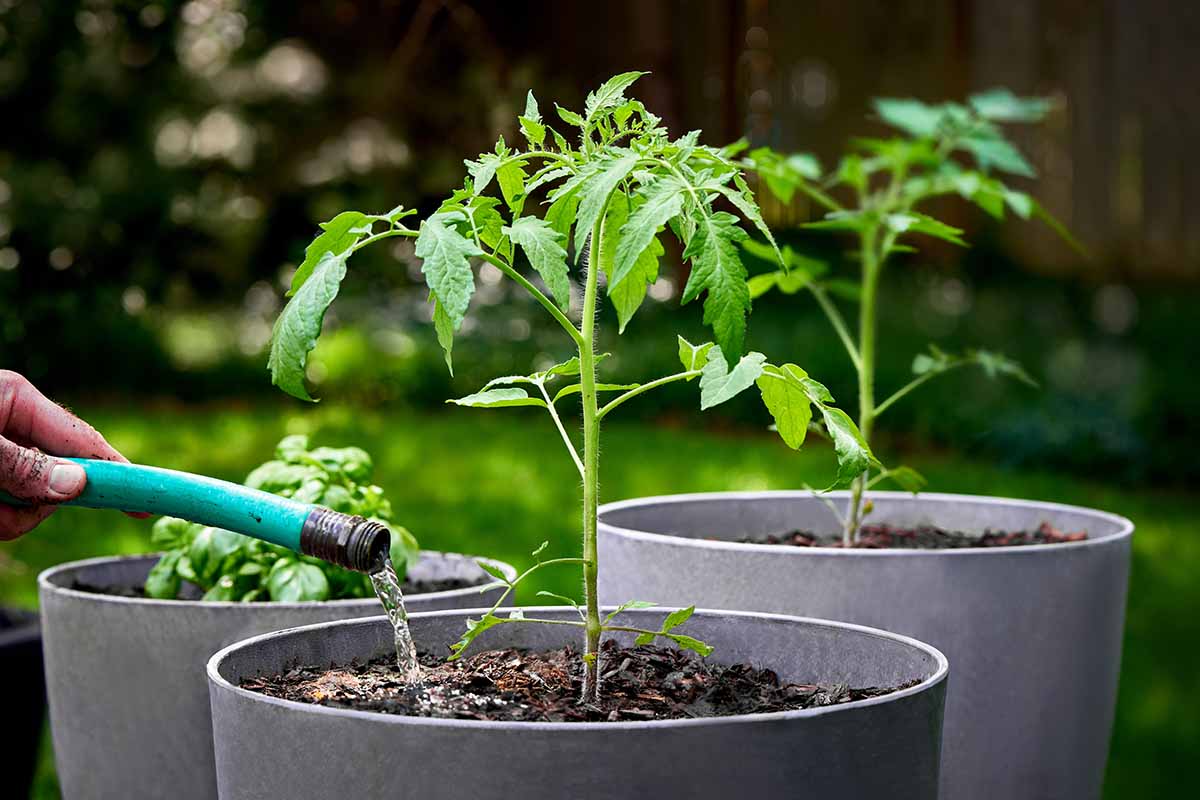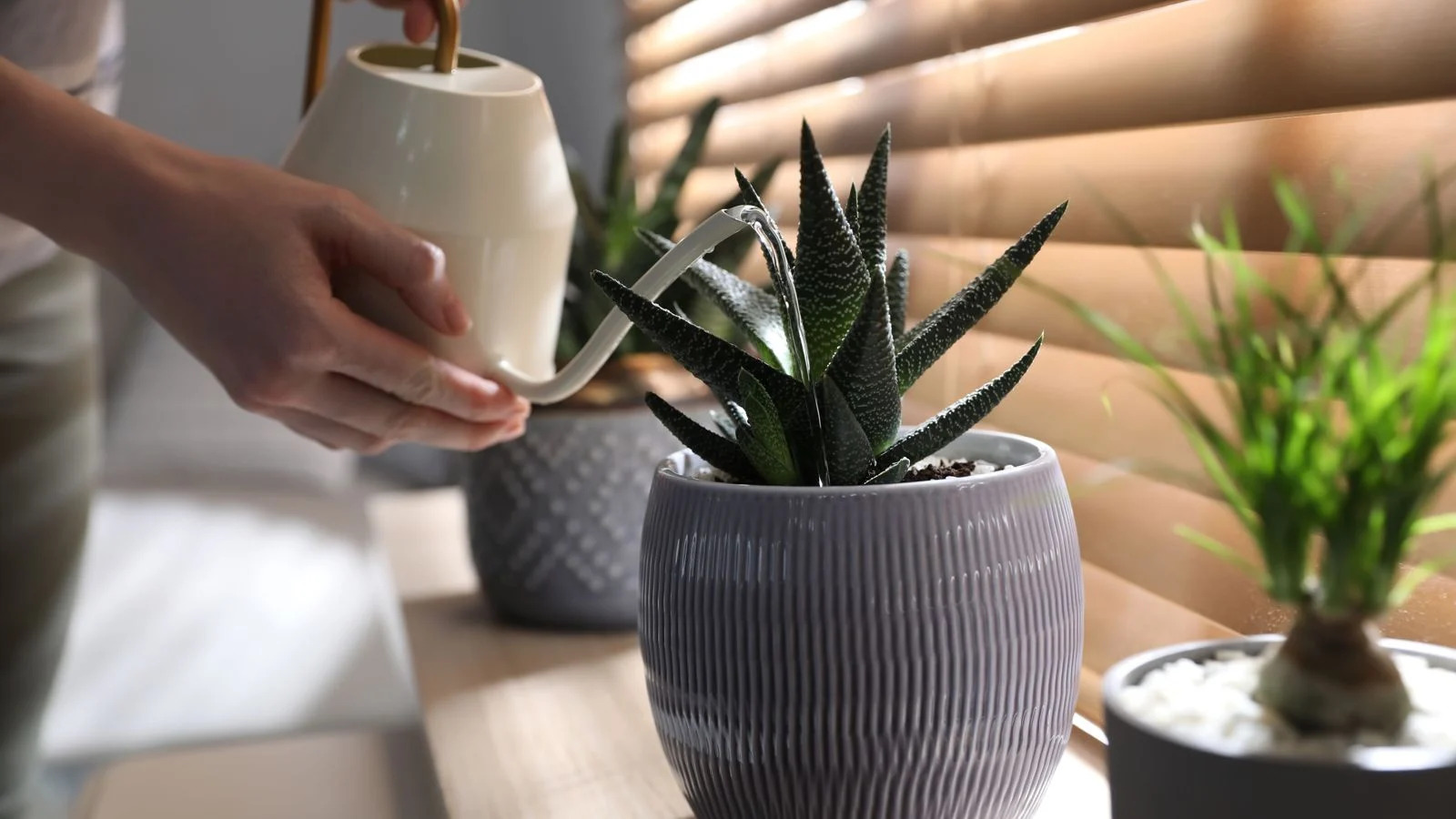Home>Gardening Tips and Tricks>Eco-Friendly Gardening>How Often Should I Water My New Landscaping


Eco-Friendly Gardening
How Often Should I Water My New Landscaping
Modified: January 22, 2024
Learn how to maintain your new landscaping with eco-friendly gardening techniques. Discover the ideal watering frequency for a vibrant and thriving garden.
(Many of the links in this article redirect to a specific reviewed product. Your purchase of these products through affiliate links helps to generate commission for Chicagolandgardening.com, at no extra cost. Learn more)
Table of Contents
Introduction
Welcome to the world of eco-friendly gardening! Whether you are a seasoned green thumb or just starting to explore the joys of gardening, incorporating eco-friendly practices into your landscaping can have a positive impact on both the environment and your garden’s health. One essential aspect of maintaining a thriving garden is proper watering. Knowing how often to water your plants is crucial for their growth and survival.
Watering frequency depends on various factors, such as the type of plants you have, the season, soil type, and weather conditions. Understanding these factors will help you develop a watering routine that promotes healthy plant growth while conserving water.
In this article, we will delve deeper into the factors to consider when determining how often to water your landscaping. We will explore different watering techniques, signs of underwatering and overwatering, and tips for adjusting your watering schedule based on weather conditions. By the end, you will have the knowledge and tools to achieve an eco-friendly and flourishing garden.
Factors to Consider
When determining the frequency of watering for your landscaping, several factors come into play. Understanding these factors will help you tailor your watering routine to the specific needs of your plants.
1. Plant Type: Different plants have different water requirements. Some plants, like succulents and cacti, thrive in dry conditions and require less frequent watering. On the other hand, leafy vegetables and annual flowers may need more frequent watering to stay hydrated.
2. Season: The time of year affects the water needs of your plants. During hot summer months, plants tend to lose more moisture and may require more frequent watering. In contrast, plants may need less water in cooler seasons.
3. Soil Type: The type of soil in your garden plays a crucial role in water retention. Sandy soils drain quickly and may require more frequent watering, while clay soils retain water for longer periods and may need less frequent watering.
4. Plant Size and Growth Stage: Young plants and newly transplanted ones have delicate root systems and may require more frequent watering to establish themselves. As plants grow, their water needs may change, requiring you to adjust your watering routine.
5. Microclimate: Consider the specific conditions of your garden, such as sun exposure, wind patterns, and shade. Different microclimates within your landscape can affect the rate at which plants lose moisture and, consequently, impact watering frequency.
By taking these factors into account, you can create a customized watering schedule that meets the unique needs of your plants while conserving water.
Watering Frequency for Different Plants
Each type of plant has specific watering requirements to thrive. Understanding the watering needs of different plants in your landscaping will help you provide the right amount of water for optimal growth. Here are some general guidelines:
- Succulents and Cacti: These desert plants are adapted to arid conditions and have low water requirements. Water them deeply but infrequently, allowing the soil to dry out completely between waterings.
- Leafy Vegetables: Plants like lettuce, spinach, and kale have high water needs. Water them regularly, keeping the soil evenly moist throughout the growing season.
- Flowering Plants: Annuals, perennials, and flowering shrubs often require regular watering to support their blooming. Water these plants deeply, allowing the top few inches of soil to dry out before watering again.
- Trees and Shrubs: Established trees and shrubs have deep root systems that allow them to access water from the soil. Water them deeply, but less frequently, letting the soil dry out between waterings. Newly planted trees and shrubs, however, will need more frequent watering to establish their root systems.
- Herbs: Herbs like basil, parsley, and mint prefer moist soil but can tolerate slight drying between waterings. Water them when the top inch of soil feels dry.
Keep in mind that these are general watering guidelines, and you should always observe your plants for specific signs of their water needs. Factors such as temperature, humidity, and soil conditions can also influence watering frequency.
It’s worth mentioning that overwatering is a common mistake that can lead to root rot and other plant health issues. Be sure to strike a balance and provide adequate moisture without creating waterlogged soil conditions.
Next, we will explore how to determine soil moisture levels to further fine-tune your watering routine.
Determining Soil Moisture Levels
One of the most effective ways to determine when to water your landscaping is by assessing the moisture levels in the soil. By understanding how to check soil moisture, you can avoid both overwatering and underwatering your plants.
There are several methods you can use to assess soil moisture:
- Visual Inspection: Look at the soil surface and observe its appearance. Dry soil will appear lighter in color and may be cracked, while moist soil will look darker and have a more compact texture.
- Finger Test: Insert your finger into the soil up to the second knuckle. If the soil feels dry at that depth, it’s time to water. If it still feels moist, you can hold off on watering.
- Soil Moisture Meters: These devices provide a more accurate reading of the soil moisture levels. Insert the probe into the soil, following the manufacturer’s instructions, to get a reading of the moisture content.
- Drip Irrigation Sensor: If you have a drip irrigation system, consider installing a sensor that measures soil moisture. This sensor can provide real-time data, helping you automate your watering schedule based on the moisture levels.
By regularly checking the soil moisture, you can ensure that you are providing your plants with the right amount of water at the right time.
Now that you know how to determine soil moisture levels, let’s discuss the signs to look out for that indicate whether your plants are in need of water or if they’ve received too much.
Signs of Underwatering and Overwatering
Properly watering your landscaping involves finding the right balance between underwatering and overwatering. Both can have detrimental effects on your plants’ health. Understanding the signs of underwatering and overwatering will help you adjust your watering routine accordingly.
Underwatering:
- Wilting: One of the first signs of underwatering is when plants begin to wilt. The leaves may appear droopy or limp.
- Dry Soil: If the soil feels dry to the touch and crumbles easily, it may indicate a lack of moisture.
- Stunted Growth: Underwatered plants may exhibit slow growth or lack new growth altogether.
- Leaf Damage: Leaves may become yellow, brown, or crispy at the edges when the plant is not receiving enough water.
Overwatering:
- Wilting: While it may seem contradictory, overwatered plants can also experience wilting. This is because excessive water disrupts the roots’ ability to uptake oxygen.
- Yellowing Leaves: Overwatering can lead to yellowing leaves, often accompanied by soft, mushy roots.
- Fungal Growth: Excess moisture creates a favorable environment for fungi to thrive. Look for signs of mold, algae, or mushrooms in or around the plant.
- Root Rot: Overwatering can cause the roots to become waterlogged, leading to root rot. Signs include a foul smell, slimy roots, and blackened or mushy roots.
It’s important to note that some symptoms of overwatering and underwatering can overlap or be similar to other plant health issues. Always consider multiple factors, such as soil moisture levels, visual appearance, and the plant’s overall condition, to accurately determine the cause and adjust your watering routine accordingly.
Next, we will discuss different watering methods you can use to efficiently water your plants.
Watering Methods
When it comes to watering your landscaping, there are various methods to choose from. The goal is to provide your plants with water efficiently, ensuring that it reaches the root zone where it is needed most. Here are a few common watering methods to consider:
- Hand Watering: This traditional method involves using a watering can or hose with a spray nozzle to manually water your plants. It gives you more control over where the water goes and allows you to target specific plants or areas in your garden.
- Sprinklers: Sprinkler systems are designed to distribute water evenly across your landscaping. They are most effective for large areas or lawns, but be mindful of overspray and adjust the irrigation schedule to avoid wasting water.
- Drip Irrigation: Drip irrigation systems deliver water directly to the plant’s root zone through a network of tubes and emitters. This method minimizes water loss due to evaporation and delivers water slowly, promoting deep root growth.
- Soaker Hoses: Soaker hoses release water slowly along their length, allowing it to seep into the soil around plant roots. They are an efficient and cost-effective way to water garden beds, flower borders, or vegetable rows.
- Self-Watering Containers: Self-watering containers have a reservoir that stores water and releases it gradually to the plants’ roots through a wicking system. This method is especially useful for potted plants and hanging baskets.
Choose a watering method that suits the specific needs of your plants and the layout of your garden. Remember to adjust the duration and frequency of watering based on the factors we discussed earlier, such as plant type, soil moisture levels, and weather conditions.
Next, let’s explore the best time to water your landscaping for optimal plant health.
Best Time to Water
Choosing the right time of day to water your landscaping is essential for maximizing water efficiency and promoting healthy plant growth. Here are the key considerations for determining the best time to water:
- Morning: Watering in the early morning is generally the best time for most plants. The temperatures are cooler, and the wind tends to be calmer, reducing evaporation. Watering in the morning allows the plants to absorb the moisture and dry off before the heat of the day, minimizing the risk of fungal diseases.
- Midday: Avoid watering during the peak heat of the day, typically between 10 am and 4 pm. The intense sunlight and high temperatures can cause excessive evaporation, resulting in water wastage.
- Evening: Watering in the evening can promote prolonged leaf wetness, which can encourage the development of fungal diseases. However, in certain arid regions, where the humidity is low and the temperatures are cooler during the evening, watering at this time can be beneficial.
When watering your landscaping, aim to wet the soil rather than wetting the foliage. Watering the leaves can lead to prolonged moisture on the surface, making plants more susceptible to diseases.
It’s worth noting that the specific watering requirements of your plants and the prevailing weather conditions in your region may warrant adjustments to the above guidelines. Monitoring your plants, checking soil moisture levels, and staying aware of local weather patterns will help you make informed decisions about when to water.
Now, let’s discuss how you can adjust your watering schedule based on weather conditions to ensure efficient water usage.
Adjusting Watering Schedule with Weather Conditions
Weather conditions play a significant role in determining the watering needs of your landscaping. Adapting your watering schedule based on changes in weather patterns ensures optimal water usage and plant health. Here’s how you can adjust your watering routine with different weather conditions:
- Hot and Dry Weather: During extended periods of hot and dry weather, plants lose moisture more quickly, and watering needs may increase. Monitor soil moisture levels and increase watering frequency if necessary.
- Humid Weather: In humid climates, evaporation rates are lower, and plants may require less frequent watering. It’s crucial to monitor soil moisture and only water when needed to avoid oversaturation.
- Rain: Adjust your watering schedule when rainfall occurs. If a substantial amount of rain falls, you may need to skip or reduce the number of watering sessions to prevent overwatering.
- Wind: Wind can cause water to evaporate more quickly from the soil and plant surfaces. During windy periods, you may need to increase watering to compensate for the increased evaporation rate.
- Seasonal Changes: As seasons transition, the water requirements of your plants may also change. Adjust your watering routine accordingly, taking into account factors such as temperature fluctuations, daylight hours, and plant dormancy.
By staying attentive to weather conditions and customizing your watering schedule, you can ensure your plants receive the right amount of water at the right time. This approach promotes efficient water usage while supporting healthy and thriving foliage.
Lastly, let’s explore some additional tips to help you water your landscaping effectively.
Additional Tips for Proper Watering
Proper watering is not just about frequency and timing; it also involves implementing certain techniques and practices to ensure the best results for your landscaping. Here are some additional tips to help you water your plants effectively:
- Deep Watering: Water deeply and thoroughly, ensuring that the water reaches the plant’s root zone. This encourages deep root growth and helps plants tolerate periods of drought.
- Mulching: Apply a layer of organic mulch, such as wood chips or straw, around your plants. Mulching helps retain soil moisture, suppresses weed growth, and moderates soil temperature.
- Watering at Ground Level: Direct water to the base of the plants rather than spraying overhead. This targets the root zone and minimizes water waste from evaporation or runoff.
- Water Conservation: Implement water-saving techniques, such as collecting rainwater in barrels or using gray water from household activities (with appropriate measures). These methods help reduce water consumption and promote sustainability.
- Regular Maintenance: Inspect your irrigation system regularly to ensure it is functioning properly. Fix any leaks or issues promptly to avoid water wastage and damage to your landscaping.
- Observe and Adjust: Continuously monitor your plants’ health and observe how they respond to your watering routine. Make adjustments as needed based on the specific needs and conditions of your landscaping.
Remember, every garden is unique, and factors such as soil type, plant variety, and local climate will influence your watering approach. Stay attentive to your plants’ needs, be mindful of water conservation, and adapt your practices accordingly to foster a thriving and eco-friendly garden.
In this article, we have explored the factors to consider when determining watering frequency, how to determine soil moisture levels, signs of underwatering and overwatering, various watering methods, the best time to water, adjusting the schedule with weather conditions, and additional tips for proper watering. By incorporating these insights, you can establish an efficient and effective watering routine that promotes the health and vitality of your landscaping.
Conclusion
Proper watering is an essential aspect of maintaining a healthy and vibrant garden. By considering factors such as plant type, season, soil type, and microclimate, you can determine the optimal watering frequency for your landscaping. Monitoring soil moisture levels and being aware of the signs of underwatering and overwatering will help you adjust your watering routine as needed.
Various watering methods, such as hand watering, sprinklers, drip irrigation, and soaker hoses, offer different advantages based on the layout of your garden and the specific needs of your plants. Choosing the right time of day to water, such as the early morning, allows for efficient water usage and reduces the risk of fungal diseases.
Adapting your watering schedule with changing weather conditions, such as hot and dry weather or periods of rain, ensures that your plants receive adequate moisture without wasting water. Implementing additional tips, such as deep watering, mulching, and water conservation techniques, further enhances your ability to maintain a healthy and eco-friendly garden.
Remember, every garden is unique, and the needs of your plants may vary. It’s essential to observe and respond to your plants’ specific requirements, adjusting your watering routine as necessary. By striking the right balance between providing sufficient moisture and conserving water, you can create an environment that fosters the growth and vitality of your landscaping.
So, grab that watering can or set up your irrigation system, and embark on your eco-friendly gardening journey. With proper watering techniques and practices, your garden will thrive, and you can enjoy the beauty and benefits of a sustainable and flourishing outdoor space.
